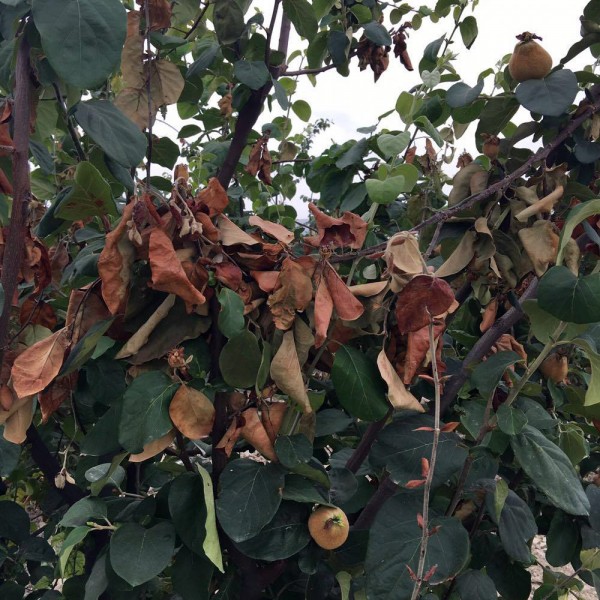This disease is usually exposed to cool and humid months of spring. Fire fever is an infectious, systematic and bacterial disease. Cool and humid air is the most suitable environment for the spread of bacterial and fungal diseases. Now, let's take a look at how we can be protected from fever illness.
What is a Fire Burn?
Fire fever is a contagious, systemic and bacterial disease. Bacteria (erwinia amylovora) attack the flowers in the early spring period and then move from the thin branch to the main branch along the tree system. The name "fire fever" is taken from the burned appearance of leaf, trunk and shells infected with the disease. These areas may appear black, drawn, and cracked. The flowers become pale and have a brown color; They also die 1-2 weeks after the infection.
In the fire flame, there may be a leakage of honey color (filled with bacteria) in the bark of the tree. In the spring months when the temperature reaches 15 - 25 ° C, appropriate conditions are provided for the bacterium to get out of sleep and to spread the disease. Bees, insects, birds, splashing raindrops and wind easily emit bacterium and fever illness occurs.
Fire blight usually affects apple and pear trees (both fruit trees and ornamental tree species), but can also affect other members of the quince trees and family of roses - including some common rose varieties and woodchip plants.
Controlling Fire Rumble
In high-pressure areas, your best defense will be a combination of cultural practices, cleaning and manual / chemical control methods.
1. Cultural Practices
Any overgrowth in your tree can easily indicate a febrile illness. To avoid this suspicion, especially if you live in a region where the fever is known, it is advisable to use low nitrogen fertilizer only when necessary and during the growing season (before July). By performing soil analysis, you can find out if your soil already needs fertilizing. Fertilization should only be done to complement missing nutrients in the soil.
2. Cleaning
When autumn comes, be sure to thoroughly clean your trees. Collect the remains of stones, mummified fruits and falling leaves, keep them away from the trees and destroy them - do not use them in composting! This cleansing prevents the bacterin from growing in the deposits and then spreading.
3. Manual Control
Purge decayed places from the bushes and trees that are caught in the disease. By doing this, you prevent the spread of the disease. At least 20cm below the rotten area, shake all diseased branches (some experts recommend 30cm below the burned area for pruning). Close the diseased branches as far as possible and destroy them.
Be sure that you have slayed tree shoots and gluttony all the months. Because growth in these regions is faster and more precise, they are more vulnerable to disease.
Do not forget to disinfect the pruning tools as the fever is a highly contagious disease. Sterilize these instruments in the bleach solutions (10 parts water 1 part bleach). Dip the scissors between each cut. and make sure that you are well established to prevent rusting.
Alternatively, you can clean the scissors with an alcoholic beaker between each cut instead of the bleaching solution. This provides both protection of your trees and your tools.
4. Chemical Control
An approved flame spore helps to control the bacterial infection. Following the product label, it should be applied throughout the turnade period from flowering time.
Ornamental trees or fruit trees are resistant to decay. The risk of infection is reduced, but you still need to perform routine maintenance to control your fever. This is very beneficial for your trees and prevents the disease from spreading to neighboring plants and trees. By communicating with local experts, you can diagnose febrile illness and control the epidemic of fever illness in your area.
Remember: There is no single application that will help you to control your fever completely, but I hope this information will help you understand this disease and control it and get high yield from your trees all the months!

